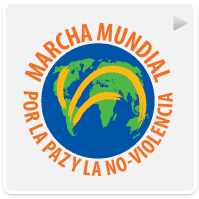The Invisibles against US missile defense
Nuclear disarmament encouraged by Hiroshima survivor

Shigeko Sasamori was 13 years old when America dropped “Little Boy” on her hometown of Hiroshima.
“My face was an all black ball, like a basketball,” she said, adding that she could not open her eyes or walk.
She waited five days for her parents to find her. When they did, they could hardly tell where her face was, she said. Survivors struggled to find anything to drink and were so hungry they ate grass growing on the streets.
Sasamori, and Steven Leeper, chair of Hiroshima Peace Culture Foundation, spoke at UM last night advocating the disarmament of nuclear weapons, and discussed how the threat of nuclear war is far from over.
“We’re not trying to make America feel bad,” Leeper said. “We’re not asking for an apology. We’re here only as a warning for the future.”
Leeper’s H i r o s h i m a-based center has been traveling to cities around the world to urge mayors to support their Mayors for Peace campaign to eliminate use of nuclear weapons.
“Earlier today, Missoula Mayor John Engen signed a document for his intent to become part of the Mayors for Peace,” Leeper said at Monday’s speech. “Cities are telling countries that they may not do this.”
He said that although the Cold War is over, we have not resolved our problems regarding nuclear weapons, and that the world is more at risk of nuclear war today than it was immediately following the Cold War.
Sasamori said she described her Hiroshima experience to illustrate the human suffering inflicted by nuclear bombing.
Towards the end of Sasamori’s speech, she motioned to a young boy sitting in the front row to come up on stage with her. She bent down and hugged him. She told the audience that seeing young children like him gives her inspiration to go on and continue spreading the message of peace to cities around the world.
“This beautiful child, like this,” Sasamori said, “how can you kill the people? Many, many innocent children died. If you feel bad, then do something for this young generation.”
Leeper said that before Japan was bombed, it was a prosperous, strong nation not so different from the United States.
“The human family is standing at a very dangerous crossroads,” he said.
Sasamori said that for nuclear disarmament and peace to come, it must start with the actions of everyday people. She made reference to a Japanese proverb and said, “The dust all over the world can make a big mountain.”
Leeper also added that the threat of nuclear warfare goes beyond party lines.
“This is not a left issue, or a right issue,” he said. “This is not a Republican versus Democrat issue.”
He said that cities and countries around the world are coming together to support the eradication of nuclear weapons. It all began with concerned and active citizens addressing their governments.
Leeper encouraged anyone interested in supporting the foundation’s project “Cities are Not Targets,” to sign a petition with UM assistant professors Charles Exley or Noriko Seguchi that coordinated the events on Hiroshima and Nagasaki this semester.
A schedule of events for the Hiroshima and Nagasaki series this semester at UM is available at http//:www.cas.umt.edu/Hiroshima_Nagasaki
carmen.george@umontana.edu
Source: Montana Kaimin
http://www.montanakaimin.com/index.php/news/news_article/nuclear_disarmament_encouraged_by_hiroshima_survivor/2850
« back









